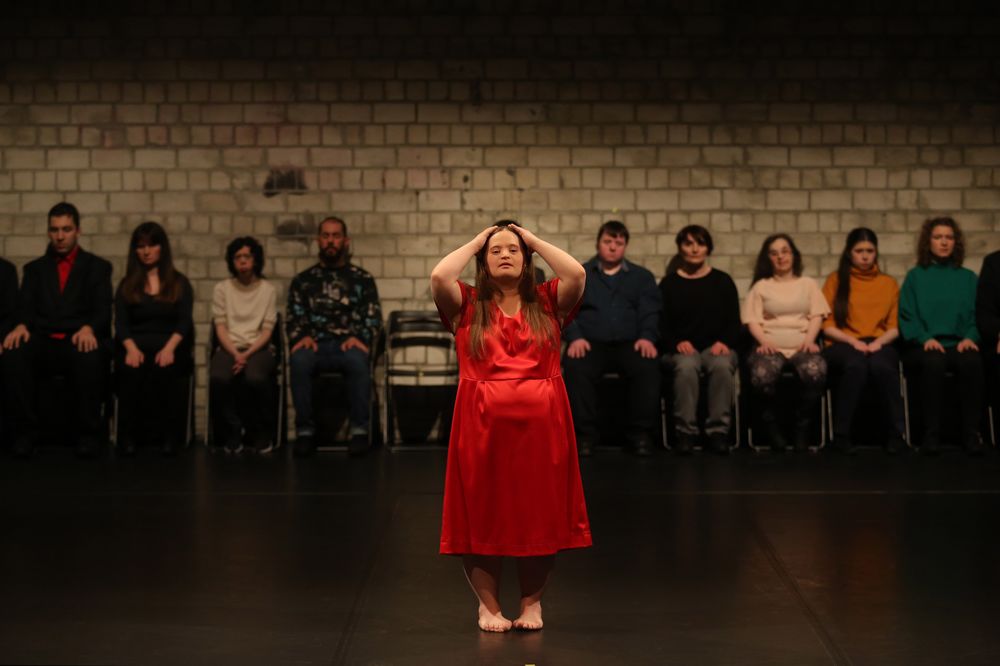Saša Asentić & Collaborators
DIS_SYLPHIDE, a dance piece on disability and dance history in Germany

04.03. 17.00 - 18.30 h
05.03. 14.30 - 16.00 h
Utopia
Trailer
“DIS_SYLPHIDE” acts like an intervention in the history of dance, confronting it with questions on normativity and authenticity of bodies in dance from the point of view of people with learning disabilities. The piece is based on three iconographic choreographies of the 20th century: Mary Wigman’s “Hexentanz” (1926), Pina Bausch’s “Kontakthof” (1978) and Xavier Le Roy’s “Self Unfinished” (1998). All three productions revolutionized existing concepts of the body and, by extension, dance history itself. A team made up of equal members with and without learning disabilities takes up this material in order to develop its own aesthetic and to produce public images of disability. As performers, they inscribe themselves into the history of dance, which to this day, has not assigned them a place of their own. “DIS_SYLPHIDE” critically deals with the aesthetic regimes of dance history and the outdated distinction between high culture and social work. For more than 20 years, choreographer and cultural activist Saša Asentić is combining his choreographic practice and his work with people with disabilities.
Concept, artistic direction: Saša Asentić
Choreography, artistic collaboration: Natalija Vladisavljević, Alexandre Achour, Olivera Kovačević Crnjanski
Performers: Natalija Vladisavljević, Jelena Stefanoska, Snežana Bulatović, Dalibor Šandor, Marko Bašica, Frosina Dimovska, Dunja Crnjanski, Alexandre Achour, Olivera Kovačević Crnjanski, Saša Asentić
Poems: Natalija Vladisavljević
Dramaturgy consultant: Marcel Bugiel
Artistic assistance: Frosina Dimovska
Advice on costume design: Marina Sremac
Executive producer Novi Sad: Nataša Murge Savić
Coproduction: Kampnagel Hamburg, Künstlerhaus Mousonturm Frankfurt am Main, MIKUB e.V. Berlin, Per.Art Novi Sad
Support: Aktion Mensch, NATIONALES PERFORMANCE NETZ (NPN) Koproduktionsförderung Tanz aus Mitteln der Beauftragten der Bundesregierung für Kultur und Medien
Guest performance kindly supported by Goethe-Institut

